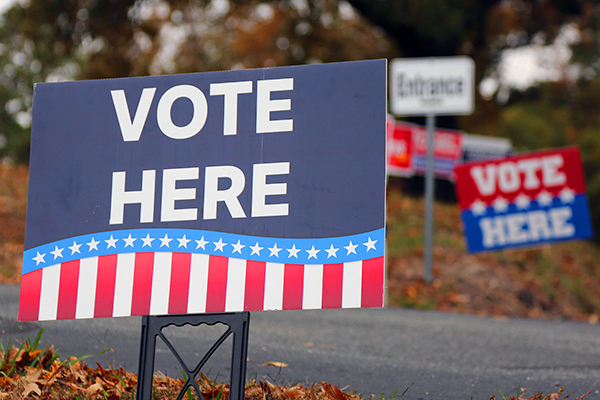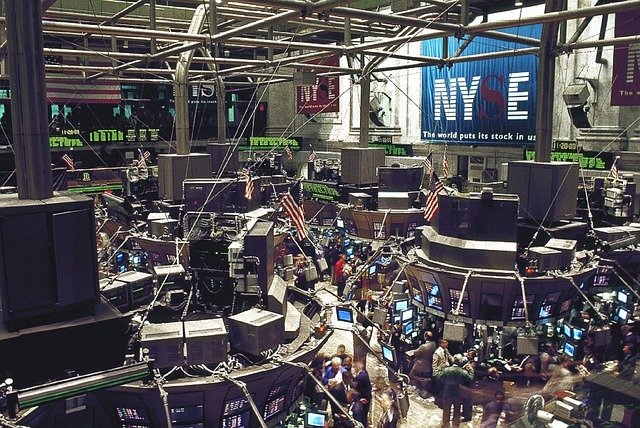The calm year of 2017 has given way to a new dynamic so far in 2018, one where volatility has returned. The first quarter saw more 1% and 2% swings in the US stock market indexes than all of 2017 and in some cases 2016 combined. The Dow Jones Industrial Average rose 10 straight months through January 2018—this streak ended when February was a down month, but the streak was the longest since one that ended in February 1959 (that streak was 12 months in a row). The volatility started in February, with a stronger than expected unemployment report, and then continued into March. March saw a trifecta of reasons for volatility including the Fed tacking on an extra rate hike in 2019, the Trump tariffs and Chinese response, and the Facebook failure to protect customer data.
The initial bout of volatility arrived courtesy of a much stronger than expected unemployment report for the month of January, reported in early February. The surprise was not so much the number of jobs created or the unemployment rate itself, but the strength of the wage growth that occurred year over year. This sparked a concern that inflation had finally arrived and that the Fed would possibly be forced to hike rates at a faster pace. The February data, reported in March, calmed these fears as wages are still growing less than 3%/yr ( Dept. of Labor). Although if the unemployment rate stays at the current level (the lowest since 2001) or goes lower, and if the labor force participation rate for the primary workforce (ages 25-54) continues to rebound from the low set in 2015, it is likely wage growth will accelerate. Globally, unemployment also continues to improve in the developed economies. Europe has seen marked reduction in unemployment, the UK rate is the lowest since the 1970s, and Japan is the lowest since 1974, yet wages in those economies also continue to show little growth (Schwab Market Perspective, 3/2/18).
The Federal Reserve Board raised rates at its March meeting by another 0.25% as expected. What was not expected was their stated plan for future hikes. The Fed held firm on the idea of two more hikes in 2018 (three total) but moved the target for 2019 from two hikes to three. This kicked off another selloff in equities, but really caused the bond market to begin a slide. The 2yr US Treasury is the bond traditionally most sensitive to Fed actions. The 2yr was around 2%, the last time we visited in January; it is now 2.5%, the highest in a decade. The 10yr US Treasury hit 3% for the first time in four years just a few days ago, but it is just a few basis points from the highest level since 2011. Notably, the 2yr/10yr spread is the narrowest it has been in ten years. I discussed last quarter how a flat yield curve makes people nervous because an inverted yield curve (where long term rates are lower than short term rates) often portends a recession. The interest rate rise has been tough on income investments this quarter, but that is a temporary disconnect and will resolve itself in time.
The next volatility spike was over the possibility of a trade war. First, a little history on tariffs: The Smoot-Hawley Act passed in 1930 is widely credited with deepening the Great Depression. It was initially passed to protect US farmers, but other industries lobbied for, and were granted, protections. World trade fell dramatically across the board. Countries started resorting to devaluing their currencies to get a leg up, and this further reduced demand as other countries responded with additional trade barriers. The US did not really recover from this until WWII came along. A more recent example comes from 2002 when President George W. Bush raised steel tariffs. According to a Bloomberg article which cited the US International Trade Commission, US GDP fell by $30m and 200,000 jobs were lost. Now, President Trump is trying to appeal to his political base in the Midwest and rust belt. China has suggested tariffs on soybeans, grown in those very states. The EU has threatened to impose tariffs that would focus on products that it says are from those states, specifically iconic brands of motorcycles, blue jeans and bourbon. Trump responded to that threat with one of his own, a 25% tariff on European cars. See how quickly this could get out of control?
I try not to be political in these missives, and there is an argument to be made that Chinese infringements on intellectual capital are valid and something should be done about that. However, tariffs are bad. They are inflationary (if the price of a global competitor’s goods rise due to a tariff, the natural response by the US manufacturer is to raise prices), they are inefficient (there is a reason global trade exists and that is the concept that certain countries are better at producing certain goods—with trade everyone wins, with barriers everyone is at a greater disadvantage), and they are not democratic (measures aimed at helping the steel industry for example, while supporting jobs there, can cost jobs in industries where steel is a cost of goods sold, e.g. automobiles—additionally every single US consumer is hurt if steel prices rise and the cost of everything we buy that uses steel goes up). That said, it is possible the President is using bluster to prove a point at the negotiating table. If he is successful in using the threat of tariffs to renegotiate trade agreements more in the country’s favor then perhaps this will all work out for the best—I have my doubts though, especially with China—they hold a massive amount of US Treasuries and are working on a massive, multiyear infrastructure project, the New Silk Road, to increase trade with Europe and the Middle East.
The midterm elections, just about six months from now, could add to the volatility. History suggests that the party of the president, in this case Republican of course, usually loses seats in the House. If the economy is doing poorly and unemployment is elevated the sitting presidents party usually gets crushed. However, if the economy is doing well and unemployment is low the loses are minimal or there have even been a few times when there were small gains. Obviously, we have the strongest economy in 10 years right now and unemployment is near historic lows. Offsetting that is a President with historically low approval numbers and democrats winning one-off elections in historically GOP stronghold sectors. The next few months will decide if the tariffs and/or interest rate hikes end the bull market, and if unemployment starts rising then that will add to the democratic wave; if not, the President’s popularity may be higher by then, especially if he makes progress with North Korea.
This brings me to the bottom line. The economy is marching along, the tax cuts will help that for a couple quarters, this earnings season stands to be one of the best of the entire bull market, and the Feb/Mar corrections have left stocks with slightly better valuation than in January. Eventually, this expansion and bull market will come to an end. The seeds of which may be starting to sprout but that is not to say disaster is imminent. Recession indicators are still barely flashing yellow, if flashing at all and inflation is perking up, but not yet a major concern. The market seems to be in a consolation pattern right now, stuck between the January highs and February lows—whichever way the pattern is resolved is likely to be the way the market continues for a while after that. We are positioning portfolios to take advantage of both outcomes by focusing on investments that have solid value. Thereby if the market moves higher, those undervalued companies will close the gap, if the market breaks lower, they will not fall as much since much of the damage has already been done. As always, please call or contact Jim or me with any questions or comments.





